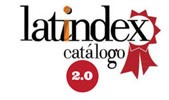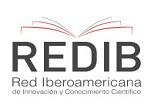English Language Teaching Methods for the Idiomatic Preparation Required by the University of the XXI Century
DOI:
https://doi.org/10.69890/hallazgos21.v3i0.243Keywords:
methods; teaching; general English; university.Abstract
The idiomatic preparation in English is an imperative of the University of the XXI Century. With the purpose of analysing the teaching methods that are used for the General English teaching-learning process of first level students in the PUCE Esmeraldas Campus, a quantitative-qualitative investigation was carried out with the analytical-synthetical, hermeneutic-dialectic, and statistical methods, the techniques of observation and survey, applied to a population of 110 students and 4 General-English teachers from the first level of the different careers at the mentioned institution. The results revealed that the methods more frequently used were the Task-Based Approach to Language Teaching (TBLT), the Direct Method, the Grammar-Translation Method, the Audio-Lingual Method, the Total-Physical Response, Community Language Learning, and the Communicative Approach to Language Teaching, with the Ludic Methodology in some occasions. The teachers prepared dynamic activities to activate learning, so the students kept involved in this process. The students indicated that they do prefer to learn with the use of songs, videos and drama in communicative activities. These results permitted to conclude that in the didactics of General English, a methodological eclecticism, which permits to develop the English language in students from different specialities and interests, is used.
References
Fernández, S. (1995). “Errores de desarrollo y errores fosilizables en el aprendizaje del E/LE. Tratamiento Didáctico”. ASELE Actas VI. Centro Virtual Cervantes. Recuperado de https://cvc.cervantes.es/ensenanza/biblioteca_ele/asele/pdf/06/06_0146.pdf
Hymes, D. (1972). “On Communicative Competence”, J.B. Pride & J. Holmes (Eds.): Sociolinguistics. Harmondsworth, England: Penguin Books.
Muñoz, A. (2010). “Metodologías para el aprendizaje de lenguas extranjeras. Hacia una perspectiva crítica”, Revista Universidad EAFIT. Vol.46, No.159. Recuperado de http://www.eafit.edu.co/2014/idiomas/centro-idiomas/Documents/Metodolog%C3%ADas%20para%20la%20ense%C3%B1anza.pdf
Piaget, J.P. (1952). The origins of intelligence in children. New York: International Universities Press.
Richards, J. y Rodgers, T. (2001). Approaches and Methods in Language Teaching. (2da. Ed.). Cambridge University Press.
Selinker, L. (2007). Rediscovering language. Essex: Longman.
Skinner, B F. (1953). Science and human behaviour. New York: Mcmillan.
Vygotsky (1978). Mind in Society: the development of higher psychological processes. Cambridge, MA: Harvard University Press.
Downloads
Published
How to Cite
Issue
Section
License
Los artículos enviados a la Revista Científica Hallazgos21 deberán ser totalmente originales e inéditos.
Los autores son los responsables de los textos y las imágenes incluidas en los artículos y no necesariamente reflejan el pensamiento de la editorial o de la Pontificia Universidad Católica del Ecuador, Sede Esmeraldas (PUCESE).
Los autores disponen cederle a la Revista Científica Hallazgos21 todos los derechos inherentes para la edición, publicación y distribución o divulgación del mismo.
Se autoriza a las revistas firmantes de los acuerdos de Encuentros de Revistas Latinoamericanas para reproducir en parte o totalmente los artículos con la sola mención de la fuente claramente señalada.







